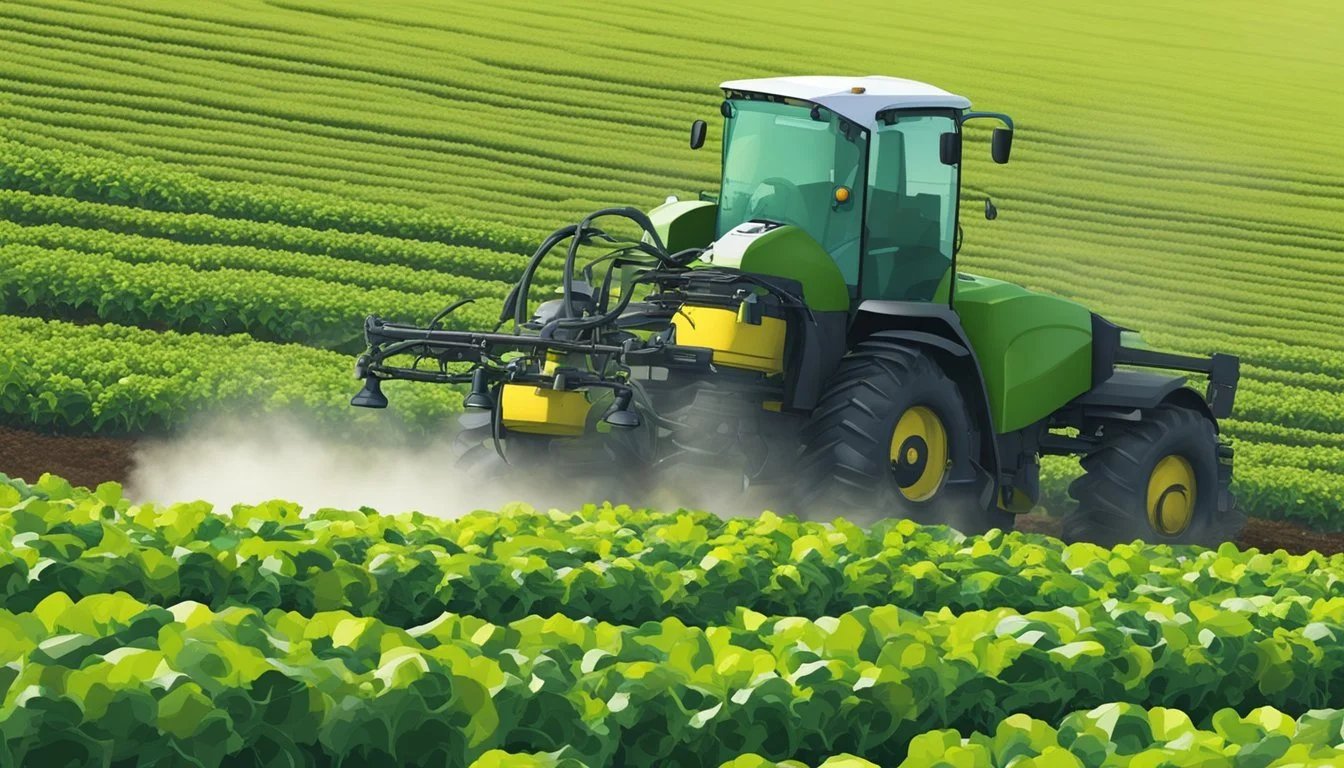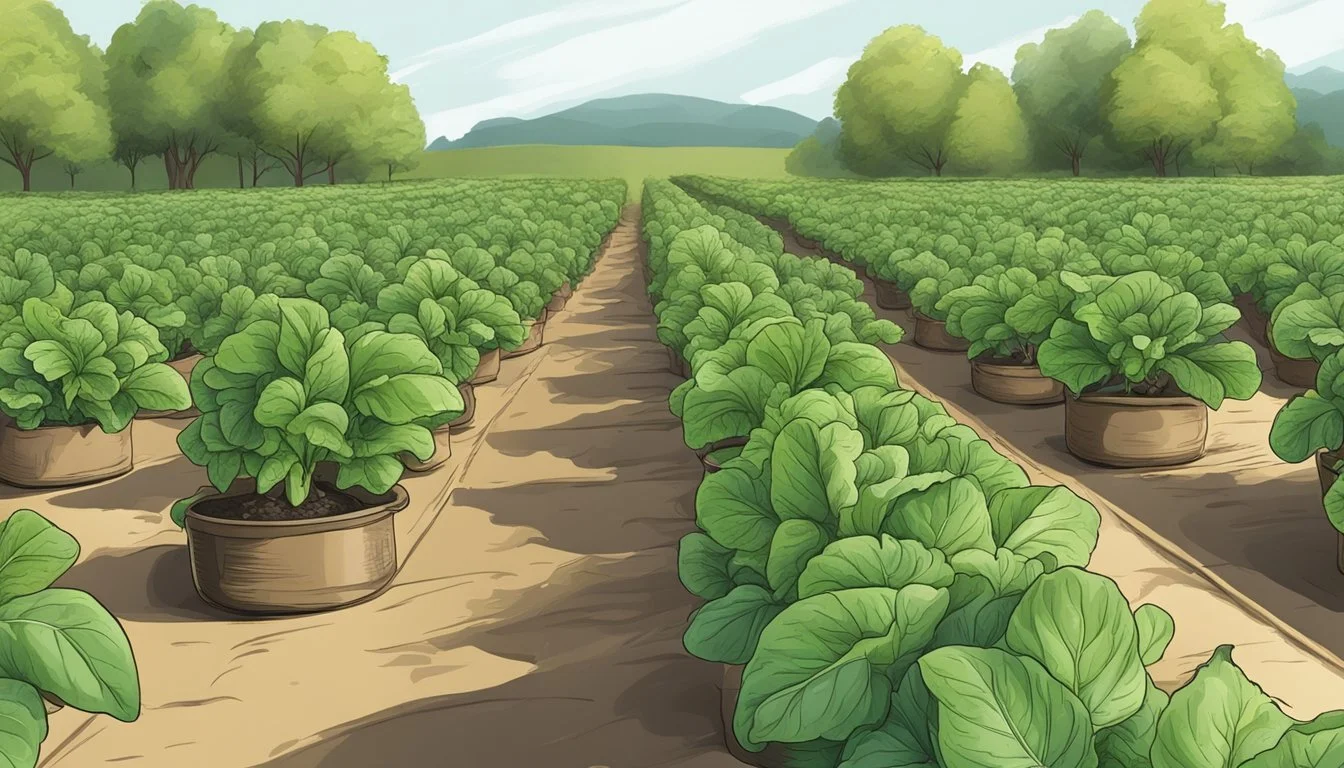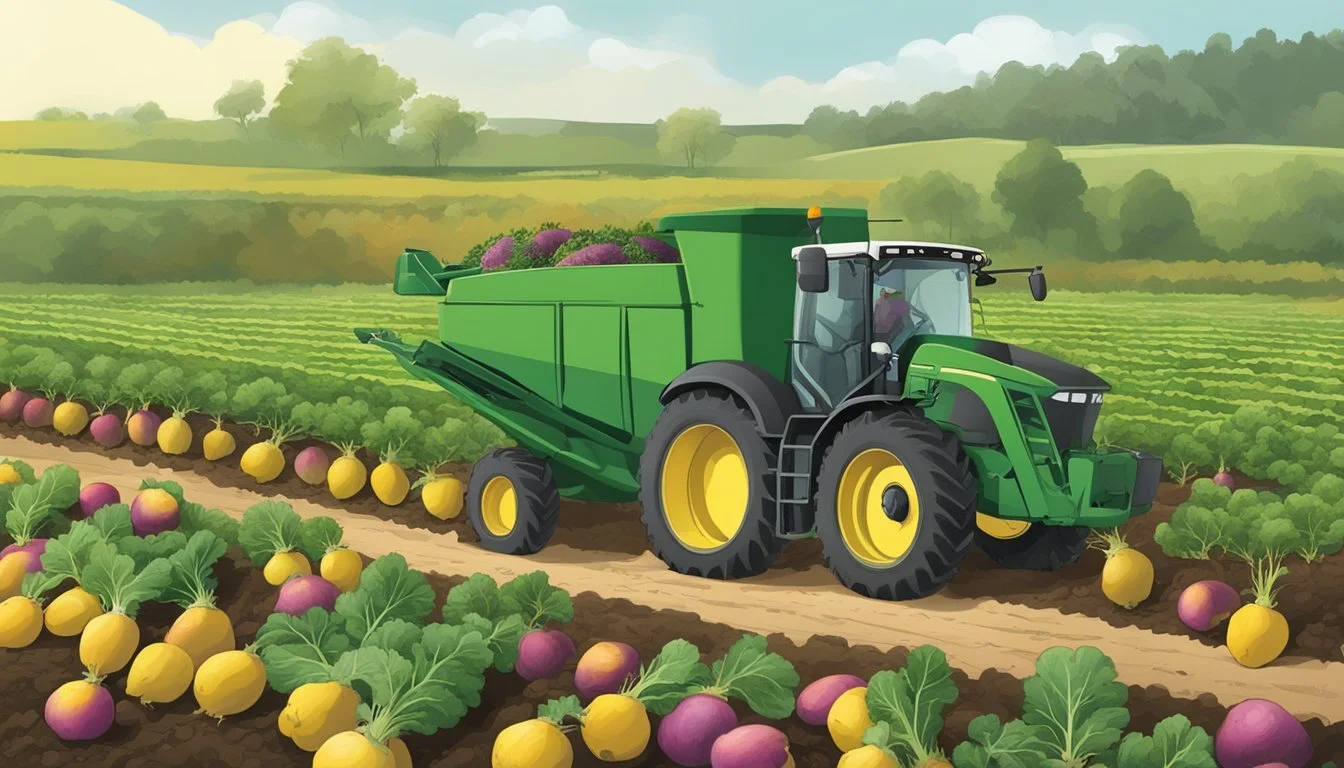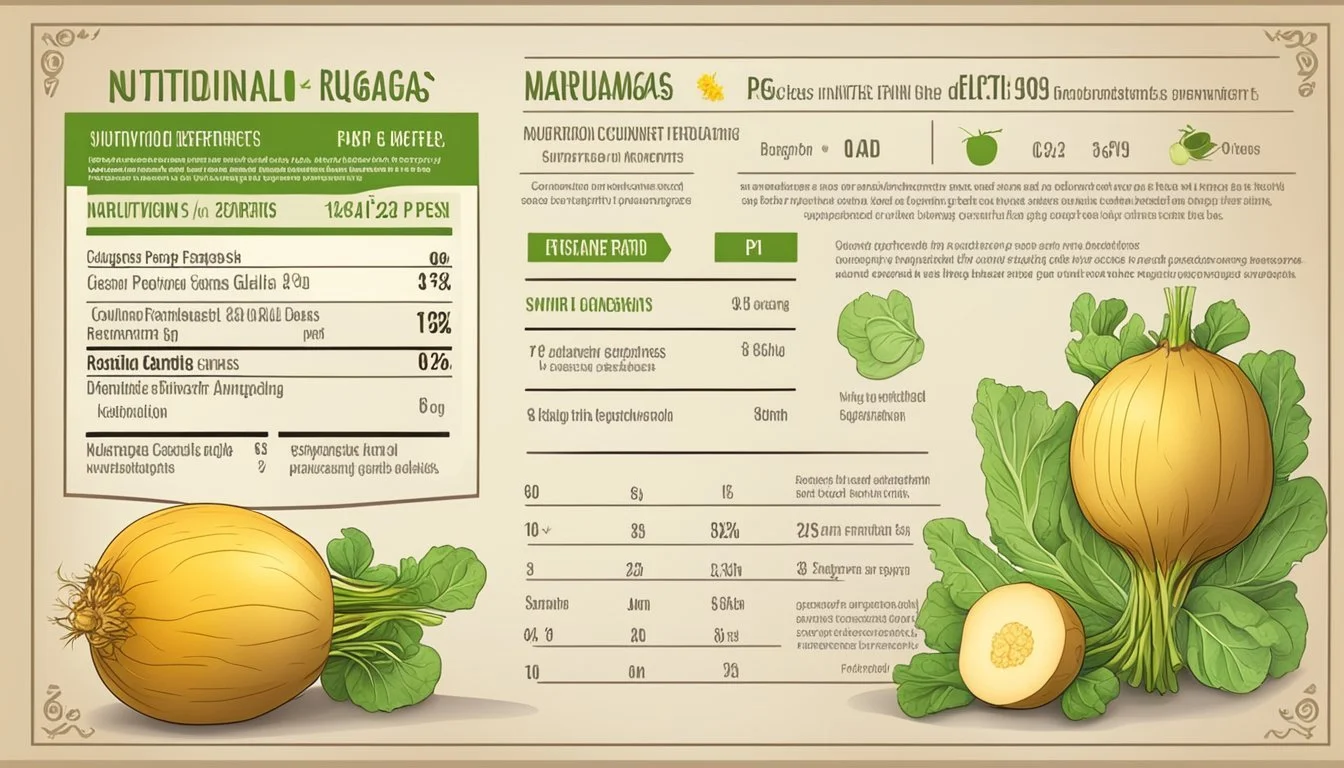Pest Control for Rutabagas
Effective Strategies for a Healthy Harvest
Rutabagas, often referred to as swedes, are nutritious root vegetables that thrive in cool climates. They are prized for their sweet and milder taste compared to ordinary turnips and can be harvested in both spring and fall seasons. However, like many other crops, rutabagas are susceptible to a variety of pests that can affect their growth and yield. Effective pest management is crucial for ensuring healthy rutabaga plants and a bountiful harvest.
Common pests that target rutabagas include aphids, wireworms, and flea beetles, each capable of causing notable damage if left uncontrolled. Implementing a combination of preventative measures and control methods can significantly reduce the impact of these pests on rutabaga crops. Strategies such as crop rotation, the use of trap crops, and applying mulches can help in preventing pest infestations. When infestations occur, a variety of control options ranging from organic solutions like neem oil or diatomaceous earth to pesticides can be considered, depending on the severity of the pest problem and the gardener's approach to cultivation.
In managing pest issues, it is also vital to recognize the signs of infestation early on to mitigate potential damage to the rutabaga plants. Observing plants regularly for any signs of distress, such as leaf discoloration or unusual markings, and identifying the type of pests present are the first steps towards maintaining a healthy rutabaga crop. With vigilant monitoring and the appropriate response, gardeners can effectively manage pests and diseases in their rutabaga plants and enjoy a successful harvest.
Understanding Rutabagas
Rutabagas, also known as swedes or Swedish turnips, are hardy root vegetables that flourish in cooler climates. They are often confused with turnips, but one can distinguish them by their larger size and yellow flesh. Cultivated as a fall crop, these biennials are typically harvested in late fall or early winter, making them a staple in cold-weather cuisine.
Appearance and Taste
Rutabagas have a purple-tinged skin above ground and a creamy, beige complexion below. Their flesh is a distinctive yellow, and they develop a sweet, earthy flavor, especially after a frost.
Growing Conditions
Required Climate: Cool temperatures, ideally between 40-60°F (4-16°C). Soil: They thrive in well-drained, fertile soil but are adaptable to a range of conditions.
Categorized as a root vegetable, they store well, which is why they are common in winter dishes. Rich in nutrients, rutabagas provide complex carbohydrates, fiber, and vitamin C.
Table of Nutritional Highlights
Nutrient Amount per 100g Calories 38 Carbohydrates 8.62 g Fiber 2.3 g Vitamin C 25% of RDI
Gardeners appreciate rutabagas for their dual-purpose nature; both the root and the leaves are edible, offering versatility in kitchen use. Despite their robust nature, rutabagas can fall prey to pests and diseases, thus understanding their growth requirements and common issues is crucial for successful cultivation.
Cultivation Practices
Effective cultivation practices are crucial for the robust growth and successful pest control of rutabagas. Understanding the subtleties of soil preparation, planting techniques, and care throughout the growing season can significantly improve crop health and yield.
Soil Preparation and pH Level
The foundation of successful rutabaga cultivation begins with soil preparation. Rutabagas thrive in well-drained soil rich in organic matter. Adding compost or manure improves soil structure and provides essential nutrients. The optimal pH level for growing rutabagas is between 6.0 and 7.0. Test the soil and amend it with lime or sulfur to adjust the pH as necessary.
Planting and Spacing
Rutabaga seeds should be sown in the early spring. This allows the crop to mature in cooler temperatures. To ensure adequate growth, individual seeds must be planted at a depth of about 1/2 inch, with rows spaced 2 feet apart. As seedlings develop, thin them to stand 6 to 8 inches apart within the row, which encourages larger root formation and facilitates air flow to prevent fungal diseases.
Irrigation and Water Care
Consistent watering is vital in the initial phases of rutabaga development. Irrigation systems should supply one inch of water per week, either through rain or manual methods. Overwatering can lead to root rot, while underwatering may cause the rutabagas to become woody and tough. Implementing drip irrigation can be beneficial in providing even moisture levels.
Fertilization and Mulching
Fertilizing rutabagas should be approached with a balanced philosophy. An initial application of a balanced fertilizer at planting time followed by a side-dressing mid-season supports healthy growth. Mulching with straw or another organic material helps retain soil moisture, suppress weeds, and protect the soil structure. It's essential to avoid high nitrogen fertilizers late in the growing season as they can lead to lush foliage at the expense of root development.
Pest Identification and Control
Effective pest management is essential to the health and yield of rutabaga crops. Accurate identification and targeted control methods can prevent insects and diseases from compromising these nutritious root vegetables.
Insect Pests
Rutabagas may be attacked by a variety of insect pests including:
Flea Beetles: They leave small holes in the foliage. Control can include using floating row covers and applying pyrethrum-based insecticides.
Aphids: These sap-sucking insects can be managed with neem oil applications or by encouraging beneficial predators like ladybugs.
Caterpillars and Cutworms: Inspection and hand-picking can reduce populations, while Bacillus thuringiensis applications provide targeted control.
Maggots (Cabbage Fly) and Wireworms: Practices such as shallow cultivation and crop rotation help disrupt the life cycle. For severe infestations, approved pesticides may be necessary.
Pests such as slugs, whiteflies, and others can also pose threats, thus monitoring and tailored interventions are advised.
Disease Management
Diseases can greatly affect rutabagas, including:
Fungal Diseases: Black Rot, caused by Xanthomonas campestris, is a significant threat and can be managed by crop rotation and resistant varieties. (GardenersPath.com)
Clubroot and Root Rots: occur due to fungi and can be suppressed by ensuring good drainage and soil pH adjustments.
Leaf Spot Diseases, such as Alternaria, manifest as discolored foliage and can be minimized by avoiding overhead watering and employing fungicides.
Implementing good sanitation practices and timely actions can mitigate these risks effectively.
Preventative Measures
To prevent pest and disease outbreaks:
Cultural Control: This includes strategies such as crop rotation, removing plant debris, and controlling weeds, which serve as habitats for pests.
Physical Barriers: Using floating row covers can provide an effective barrier against many pests.
Biological Control: Involves introducing or encouraging natural predators or parasites of the pests into the crop environment.
Thorough understanding and execution of these measures can significantly reduce the incidence of pests and diseases.
Harvesting and Storage
Maintaining the flavor and quality of rutabagas requires adherence to proper harvesting and storage techniques. They develop a sweeter taste after the first frost, which makes timing crucial for harvest.
Best Practices for Harvesting
Rutabagas reach optimal maturity and flavor when they are about 4 to 6 inches in diameter. It is best to harvest rutabagas before the ground freezes, but after a few light frosts which can enhance their sweetness. One should use a garden fork to gently lift them from the soil to prevent bruising. It is important to trim off the foliage to about an inch above the crown, and to clean the roots gently without using water to minimize the risk of mildew and rot.
Storing Rutabagas Properly
For storage, rutabagas require a cool, humid environment with a temperature of 32° to 38° F and a humidity level of 90-95% to maintain their texture and flavor. If one does not have access to a root cellar, similar conditions can be mimicked in a basement or garage. They can be insulated with straw if necessary to maintain the temperature. For prolonged storage, it is advisable to place rutabagas in perforated plastic bags to balance humidity and prevent wilting. Under these conditions, rutabagas can be stored for several months.
Nutritional Information and Uses
Rutabagas, also known as swedes, are a nutritious root vegetable with a variety of culinary applications. They are a low-calorie food, offering roughly 37 calories per 100 grams, and serve as a good source of dietary fiber which aids in digestion.
From a nutritional standpoint, rutabagas are rich in essential vitamins and minerals. They provide an array of nutrients like vitamin C, potassium, and magnesium, which are important for maintaining a healthy body.
Nutrient Benefit Vitamin C Supports the immune system and skin health. Potassium Contributes to heart health and proper muscle function. Magnesium Important for bone health and regulating muscle and nerve function.
In terms of diet and cooking, rutabagas are incredibly versatile. They can be roasted, mashed, or added to stews and soups. Their rich, sweet, and slightly peppery taste complements a variety of dishes. Being edible both raw and cooked, they can also be shredded into salads for a nutritious crunch.
Rutabagas fit well into a healthy diet, as their high fiber content can help in maintaining a moderate weight. They are often suggested as a part of balanced meal plans focusing on whole, nutrient-dense foods.
Despite their utility in the kitchen, when preparing rutabagas, one should ensure that they are thoroughly washed and peeled, as their outer skin can be tough. They are best stored in a cool, dry place to maintain freshness and to extend their shelf life.
Frequently Asked Questions
This section provides concise answers to common inquiries about managing diseases and pests in rutabagas, applying natural deterrents, identifying spoilage, utilizing pesticides effectively, leveraging beneficial insects, and safeguarding turnips.
How can I identify and manage common diseases affecting rutabagas?
To identify diseases such as clubroot or black rot in rutabagas, gardeners should look for wilting, yellowing leaves, or blackened stems. Management often includes crop rotation and using disease-resistant seeds, as advised by resources like Gardening Know How.
What natural methods are effective for preventing caterpillar infestations on rutabagas?
For natural caterpillar prevention, one can use floating row covers to physically block access or apply Bacillus thuringiensis (Bt), a biological pesticide safe for humans but lethal to caterpillars.
How can I determine whether a rutabaga has gone bad or is affected by pests?
A rutabaga spoiled or infested by pests will often exhibit soft spots, discoloration, or the presence of visible insects. Regular inspection can assist in identifying these signs early on.
What are the most effective pesticides for treating caterpillar pests on rutabagas?
Effective pesticides for caterpillar control on rutabagas include the use of synthetic options like spinosad, as well as Bacillus thuringiensis (Bt), which specifically targets caterpillars without harming beneficial insects.
Are there any beneficial insects that can help control pest populations on my swedes?
Indeed, beneficial insects such as ladybugs, lacewings, and parasitic wasps can reduce pest populations on swedes by consuming aphids and other small pests that can be detrimental to the crop.
What steps can I take to protect my turnips from common bugs and insects?
To protect turnips, swedes' close relative, from common pests like aphids or flea beetles, one can use row covers, introduce beneficial insects, or apply insecticidal soap or neem oil as needed, keeping in mind to follow best practices for pest control.






